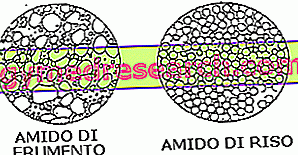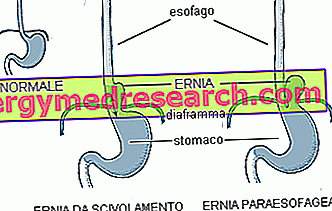Watch the video
X Watch the video on youtubeGenerality
Lowering blood sugar is a need for people with high blood glucose levels, to ward off the dangerous consequences of a condition known as hyperglycemia.

How to lower blood sugar, that is, strategies to reduce glucose levels (clearly when they present an anomaly), has always been a very popular topic, which includes: diet, exercise, healthy behavioral habits, etc.
Short review of blood glucose and its fasting values and after a meal
Expressed in milligrams per deciliter (mg / dl) or in nanomoles per liter (nmol / l), blood sugar is the concentration of glucose - a sugar - in the blood.
In healthy people, the value of fasting blood glucose is between 60 and 99 mg / ml, while the value of blood sugar after a meal can settle between 130 and 150 mg / ml (much depends on the sugar content of the meal taken).
The best known disease associated with blood sugar - to be precise with high blood sugar ( hyperglycemia ) - is diabetes .
| Fasting glucose values | (mg / ml) | (nmol / l) |
| NORMAL | 60 - 99 | 3.3 - 5.5 |
| impaired | 100 - 125 | > 5.5 - <7.0 |
| DIABETES | > 126 | > 7.0 |
| Blood sugar levels at 120 minutes from the meal | (mg / ml) | (nmol / l) |
| NORMAL | 130 - 150 (better if <140) | 7.21 - 8.32 |
| impaired | > 140 <200 | > 7.8 <11.1 |
| DIABETES | > 200 | > 11.1 |
To learn more: Blood glucose
Lower blood sugar
Lowering blood glucose is an act of fundamental importance to prevent the feared complications, both acute and chronic, related to excessively high levels of glucose in the blood (hyperglycemia).
Lowering blood sugar and knowing how to lower blood sugar are two primary needs among diabetic patients, whose organism produces insufficient amounts of the hormone insulin and / or is poorly sensitive to the action of the aforementioned hormone.
Curiosity
During the day, glycaemia is not stable, but varies according to the meals consumed by an individual, the quantity and quality of food ingested during the aforementioned meals, and physical activity.
How to realize the need to lower the blood sugar level?
Having ascertained under which circumstances the blood sugar level should be lowered, it remains to be clarified how to notice these circumstances. The characteristic symptoms of hyperglycemia, fundamental to the recognition of the latter, when it is ongoing, are:
- Dry mouth and intense thirst;
- Abdominal pain with vomiting;
- Pulse weak and rapid;
- Red, dry and warm skin;
- Breath from the characteristic smell of acetone;
- Progressive alteration of consciousness, with the appearance of restlessness, agitation and confusion.
The most serious consequences of hyperglycemia (in medical jargon, we speak of hyperglycemic crisis ) are: the hyperglycemic coma (or diabetic coma ), the extreme dehydration due to hyperosmotic urine from hyperglycemia and thrombosis (on which an increased risk depends of stroke, heart attack etc.).
IDENTIFY AN SUBDOLUS ENEMY: HYPERGLYCEMIA LIEVE
Due to poorly defined symptoms, a limited hyperglycemia can go unnoticed for a long time. This is the reason why experts in the field of diabetes advise to periodically monitor the glycemic levels also through the practical portable blood glucose meters, able to detect the latter through the puncture of the fingertip.
Under the strict control and instructions of a doctor, glycemic self-control can be useful to personalize drug therapy in relation to the actual needs of the organism, which may vary, for example, depending on the level of physical activity or type power supply.
How to lower blood sugar
Considering the considerable difficulties in summarizing within a single article the numerous strategies relating to how to lower blood sugar, the following are only the most common remedies - such as physical activity, dietary interventions, behavioral interventions etc. - and links to in-depth articles:
- Blood Glucose Drugs
- Supplements and Natural Remedies for low blood sugar (see also the scheme on supplements and herbal remedies potentially useful in case of diabetes)
- Diet and Food for Lowering Blood Sugar
- All remedies for lowering blood sugar
PHYSICAL ACTIVITY: HOW DOES IT WORK ON GLYCEMIA?
The practice of physical exercise is one of the simplest and most effective remedies for lowering blood sugar.
If at rest the muscle tissue uses insulin as a transport vehicle to absorb glucose from the blood, during intense physical activity the same muscle tissue is able to capture blood glucose (that is, blood present) even in the absence / deficiency of the aforementioned hormone; this happens because the physical exercise, especially that of duration, stimulates the displacement (in technical jargon, we speak of translocation) of glucose-collecting molecules - the so-called GLUT-4 glucose transporters - from the storage site, present inside of muscle cells, at the plasma membrane of the latter. In other words, physical activity triggers a process whereby muscle tissue cells move a group of molecules capable of capturing blood glucose from the internal accumulation site (where they have no contact with blood and glucose circulating therein) to plasma membrane (which is instead the portion of a cell used for contact and communication with other cells, blood, the extracellular environment, etc.).
In this way, the muscle cells externally "arm themselves" with a sort of "glucose-catching net", which allows them to not have to use insulin. Clearly, the glucose that the muscle cells take from the blood in this way is accompanied by a reduction in blood sugar.
All this explains why sport is a very useful medicine in the prevention of insulin resistance and in the treatment of diabetes mellitus.
To learn more: Physical activity and type II diabetes
THE DIETARY ACTIONS AGAINST HIGH GLYCEMIA
Diet is a fundamental tool for lowering high blood sugar.
Briefly, the fundamental dietary principles on which the fight against hyperglycemia is based are:
- Reduce the portions of foods rich in carbohydrates (eg: cereals and derivatives, potatoes, peeled legumes, sweet fruit, etc.);
- When choosing foods rich in carbohydrates, always choose for those with a low glycemic index (eg cereals and wholegrain derivatives, dietary cereals enriched with soluble fiber, whole legumes, little or medium sweet fruit, etc.);
- In case of overweight, follow a low-calorie slimming diet;
- Lower the glycemic load of meals as much as possible. In this sense, valid strategies are:
- Increase the number of meals (at least 5 and not more than 7), while reducing their caloric intake;
- Reduce individual portions of carbohydrate-rich foods and distribute them in all daily meals (except for those that precede nighttime sleep);
- Lower, as far as possible, the glycemic index of meals, through:
- A greater intake of dietary fiber, coming from low-calorie vegetables (eg: radicchio, lettuce, zucchini, etc.);
- The use, as a condiment, of extra virgin olive oil (slows digestion and absorption of sugars, so it avoids the so-called glycemic surge);
- Consumption of protein-rich foods such as chicken breast, cod fillet, egg, lean ricotta, etc. (for the same reasons described for extra virgin olive oil).
- Avoid drinking alcohol. If you really can't avoid them, limit yourself to small amounts of red wine;
- Consume foods rich in good fatty acids, in particular omega 3;
- Eat foods rich in vitamin antioxidants (red or orange fruits, vegetables, crustaceans, milk, wheat germ, maize germ, sesame, etc.), because they protect from free radicals and fight oxidative stress, two factors related to high blood sugar;
- Prefer foods rich in non-vitamin antioxidants (eg: onion, garlic, citrus fruits, etc.);
- Respect a fairly long time between the last meal of the day and breakfast the following day.
Other useful tips
In order to control and lower the blood sugar level, other strategies and other very popular tips are: always measuring and weighing food portions, using small dishes (so as to avoid overdoing food), avoiding all-you restaurants -can-eat ”, read the labels related to the nutritional values of foods, keep a food diary (on which to mark the foods consumed during the day) and, finally, eat slowly.
BEHAVIORAL INTERVENTIONS ON STRESS AND SLEEP NIGHT
Scientific studies have shown that stress and inadequate nocturnal sleep increase blood sugar levels.
According to this research, in fact,
- Stress increases glucagon and cortisol levels, two hormones that increase blood glucose levels;
- The poor quality of sleep at night, on the other hand, affects the sensitivity of insulin by the body's cells, increasing appetite and increasing body weight.
In these situations, therefore, it is advisable to use relaxation techniques and strategies aimed at improving nocturnal sleep in order to lower the blood sugar level or in any case avoid raising it.
PERIODIC CHECK OF GLYCEMIA
Although it appears obvious, a remedy that has always been effective in lowering blood sugar is to check it periodically, so you know how and when to intervene.



